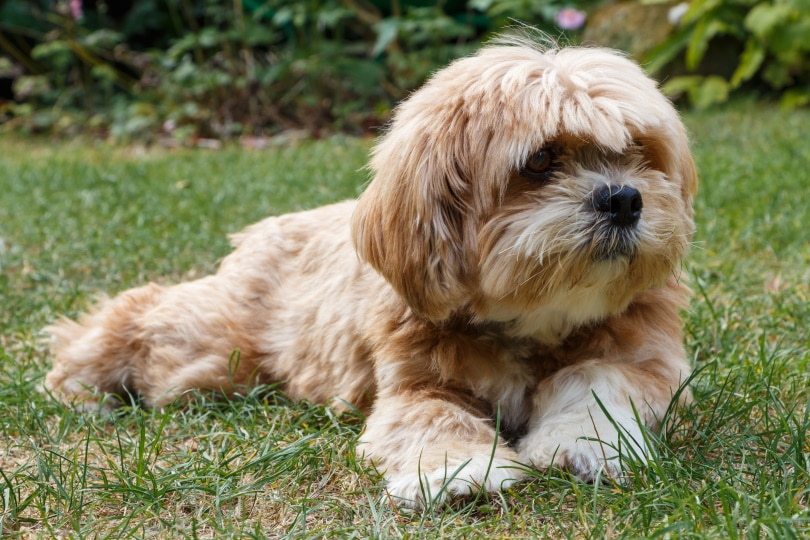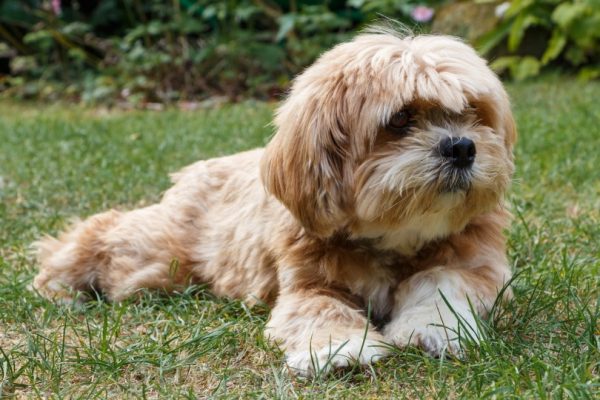Click Below to Skip Ahead
The Be-Apso is a mix between a Beagle and a Lhasa Apso. Because it is a mixed breed, you never quite know exactly what you’re going to get. The dog can inherit traits from either parent, which can potentially leave you with all sorts of different combinations. These dogs may look and act exactly like a Lhasa Apso, or they may take after their Beagle parent almost completely.
Breed Overview
Height
10 – 12 in
Weight
8 – 17 lbs
Lifespan
12 – 14 years
Colors
Brown, white, black, cream
Suitable for
Families with older children
Temperament
Protective, devoted, calm
However, most will fall somewhere in between. With that said, this mixed breed usually has similar traits. For instance, they are typically quite inquisitive and can have some protective instincts. Lhasa Apsos were made to be protective canines, so they can be quite a bit territorial. Usually, these dogs are not the easiest to train, as they tend to be a bit stubborn.
They can have long hair or short hair. Often, it is somewhere in between. They may have long fur that is a bit rougher than a Lhasa Apso. Or, they may have silky, short fur.

Be-Apso Puppies
These dogs are not particularly popular. It is difficult to find a breeder that specializes in these puppies. Instead, they tend to be happy accidents or be the result of very limited breeding. Often, you can find these dogs at rescues and shelters. If you adopt from a rescue, you’ll usually pay an adoption fee that covers the dogs’ vaccinations and veterinary care, which most canines need when they reach the animal shelter.
Be-Apsos are generally calm dogs that create strong bonds with their families. They are great for anyone looking for a calm companion to hang out with and play with. Be aware that they’re not easy dogs to train, they tend to be stubborn in training and might simply ignore you.
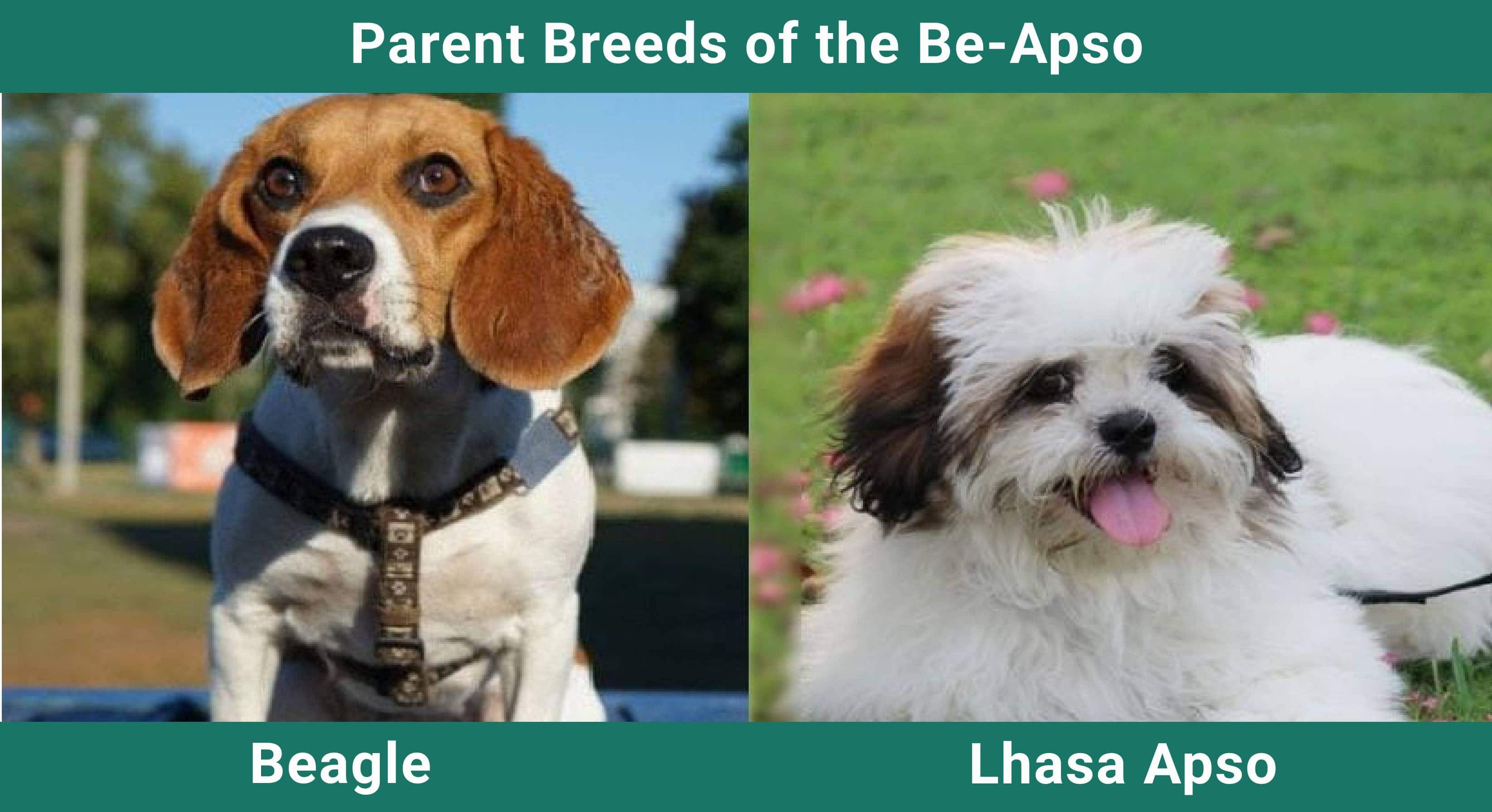
Temperament & Intelligence of the Be-Apsos
The personality of these dogs varies widely. It depends mostly on the traits they inherit from their parents, as well as how they are socialized when growing up. They are often cautious watchdogs, which makes them quite noisy. The Lhasa Apso was bred to guard monasteries, so they tend to be a bit untrusting of strangers. They are reserved around strangers, though they also have a tendency to warm up quickly.
They are quite friendly with their owners and family. They are loyal and devoted to their owners, even to the point of being a bit protective. They tend to follow their family around the house. However, they are okay with being left on their own in most situations. They are independent and don’t need tons of human attention all the time.
Their independence does make them somewhat difficult to train, though. They don’t necessarily always listen to commands and tend to have “selective” hearing. Both of their parent breeds were bred to work independently, not necessarily listen to the commands of their owners. They tend to make their own decisions about what they should be doing – instead of listening to their owners.
Are These Dogs Good for Families? 👪
Yes. They are quite affectionate with their family and bond readily. They get along with older children very easily. However, they aren’t necessarily great for younger children. They can be easily injured by rough, younger children. This can cause fear-biting. Smaller dogs are more likely to be injured by children, and therefore, more likely to bite.
This canine does require quite a bit of socialization, as they don’t automatically get along with strangers. They can be a bit aloof and potentially fearful of new people if they aren’t socialized properly from a young age.
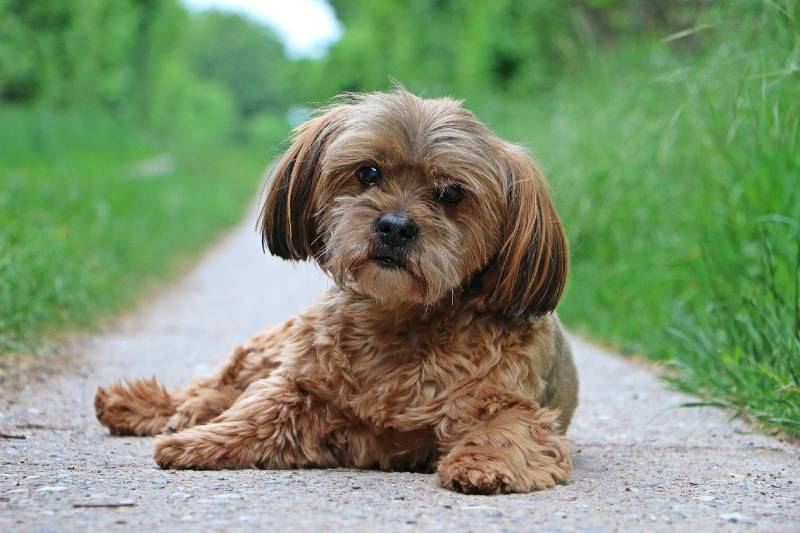
Does This Breed Get Along with Other Pets? 🐶 😽
This breed is usually neutral around other animals. They don’t dislike them, but they don’t like them either. Early socialization is important to ensure that they get along with other pets. With the proper socialization, these dogs typically get along well with other pets.
They are usually fine with cats and other small pets, though they may have a bit of a prey drive. Socialization is important to ensure that they see these pets as friends and not food.
Things to Know When Owning a Be-Apso
Food & Diet Requirements 🦴
These dogs thrive on high-quality dog food. Plan on getting food that is full of protein and high in meat. Avoid foods with many fillers, like veggies and grains. A little bit of grain or vegetables are okay, as they do add some nutrients. However, high amounts are not particularly helpful for most dogs.
We recommend varying their diet at least somewhat. Choose food that includes many different meat sources or switch their food between different flavors to vary the meat they’re eating. This helps ensure that they are getting a complete diet and helps prevent potential food allergies.

Exercise 🐕
This canine requires only moderate exercise. A short walk or two a day is typically enough to meet their activity needs. Plan on taking them outside on at least one walk per day, or into your backyard for some playtime. Because they are part Beagle, they may sniff out trails and can potentially get lost. For this reason, we don’t recommend letting them off-leash if they are not in a fenced-in area.
This dog is adaptable to many different climates. However, they aren’t designed for extreme temperatures.
These dogs do fine in an apartment as long as they are exercised properly.
Training 🎾
These dogs are extremely difficult to train. They are intelligent, but not when it comes to commands. Typically, they have “selective hearing,” which means that they will typically ignore you when you give them a command. They aren’t reliable when it comes to training. However, they are typically well-behaved indoors, even if they won’t listen when you tell them to sit.
We generally don’t recommend relying on a recall, as they probably won’t listen when in the heat of things. They are particularly known for following their nose for miles, so be sure to always keep them in an enclosed space.
Grooming ✂️
The amount of grooming required for these dogs really varies. You should generally plan on brushing them about three times per week. However, some dogs may need to be brushed more, and others may need to be brushed less. It depends largely on what type of fur they inherited from their parents. You shouldn’t bathe them often, as this can dry out their skin. We recommend using a sensitive dog shampoo as well, which can help prevent skin breakouts.
You should keep an eye on their ears, as debris can easily become stuck in them and cause infections. Check their ears at least weekly and clean them out with a wet cotton ball if necessary. You should do this even as a puppy, largely due to the smaller size of their ear canals. Starting young will also help them get used to the grooming procedures, which can be essential if you’re looking for a laidback grooming time later.
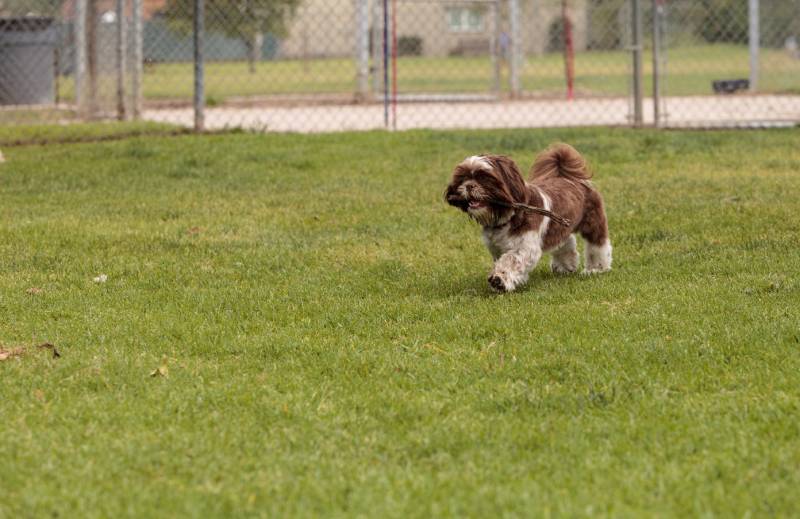
Health and Conditions 🏥
While these dogs are a mixed breed, they are still prone to a few health problems. Because they draw from a wider genetic pool, though, they are typically healthier than both parent breeds. The problems they are prone to are generally rarer and don’t appear quite as often.
Patellar Luxation
This condition involves the dog’s kneecap moving out of place and becoming dislocated. Often, the dogs will skip around or try to walk on three legs. Some dogs may act like their leg hurts, only to act like everything is fine a few minutes later. This is normally caused by a deformation in the groove that the kneecap sits in.
This is common in smaller dogs for the most part. Surgical repairs are typically required in most cases.
Hip Dysplasia
Hip Dysplasia occurs when the ball of the hip doesn’t fit correctly into the socket. This usually occurs because the hip did not form correctly. Over time, this causes wear and tear. Eventually, parts of the hip start to break down, and the hip becomes painful.
Medications often have some sort of an effect, though how much they help varies from dog to dog. Supplements are often recommended to improve their joint function as well. Lifestyle changes, like moderate exercise, can also be helpful.
Hypothyroidism
Beagles are prone to hypothyroidism, so their puppies may inherit a genetic predisposition to it as well. This occurs when the hypothyroid isn’t producing enough hormones, which causes problems throughout the dog’s body. Symptoms include weight gain, lethargy, cold intolerance, excess shedding, and a slower heart rate.
This condition is easily treatable, though it isn’t curable. The dog will need to take replacement thyroid hormones, which should clear up their symptoms quickly. The drug will need to be given for the rest of the dog’s life, though.
Allergies
Some of these dogs have allergies. This can include environmental allergies, such as pollen and dander. It can also include food allergies, which often develop over time. Food allergies can only involve proteins. Think of things like chicken and beef, as well as gluten from grains and casein from dairy.
Regularly switching the protein in the diet can prevent these problems from occurring. Allergies often develop when the dog is consuming a single type of protein for a long time.
Male vs. Female
There isn’t a significant difference between the males and females of this breed.
3 Little-Known Facts About the Be-Apso
1. They are a bit rarer.
Despite being the result of two different, common purebred dogs, this mixed breed is somewhat rare. It is hard to find breeders that specialize in this breed. There are a few, but most of them fall in the category of “backyard” breeders. You should expect to travel quite a while to find these canines.
2. They often are a high-maintenance breed.
These canines can have hair of any length. However, they often require quite a bit of maintenance. Longer hair will obviously need to be brushed regularly. However, short hair often needs a bit of care as well.
3. They can be territorial.
These dogs are often territorial due to their Lhasa Apso parentage. Early socialization is essential to ensure they don’t develop fear-based aggression.
Final Thoughts
This mixed breed isn’t extremely popular, but they can make great family pets. They’re friendly and bond deeply with their people. However, they can also be quite protective and aloof towards strangers. Socialization is essential to ensure that these pups can get along with everyone. We recommend them particularly for families with older children, as they are easily injured by small children.
This breed is pretty easy to care for, though their grooming needs can differ. They’re calm and don’t require much exercise. Their hair usually needs to brush at least a few times a week. Training them is difficult due to their independent personality.
See Also:
- Bloodhound Basset Mixed Dog Breed: Care, Pictures, Info, and More
- Basschshund Dog Breed: Info, Pictures, Care Guide & Traits
Featured Image Credit: aurelie le moigne, Shutterstock

